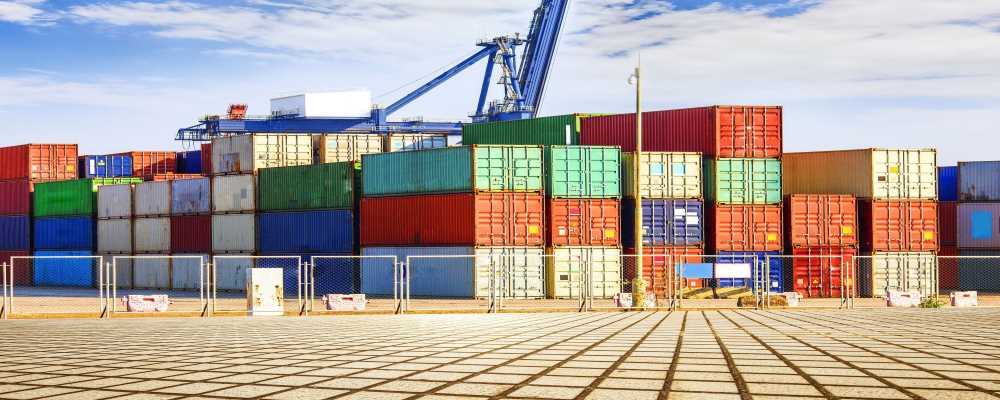2022-12-16
In international transport, weight is one of the key influences on shipping, where weight also varies greatly. Transport can be done by air or by various types of freight. It is important to consider tare weight, net weight and gross weight. Different countries have different rules and regulations relating to weight. The reason we emphasise weight is that it is used to determine the cost of transport, whether by air, rail, road or sea.

It is the weight of the goods themselves, i.e. the actual weight of the goods after the packaging has been removed. Net weight is the most common method of weighting in international trade. For reference, you can think of it as the weight of a sardine before it goes into a can. It does not include the weight of any container in which you store the product.
It is the weight of the goods together with its packaging. The citation explains the weight of the goods together with the packaging material or of livestock and poultry together with their hides and skins. This method of weighing is generally applied to low value goods.
Another important difference between these two weights is that the gross weight varies depending on the type of transport, whereas the net weight will remain the same in each case. The gross weight is added to the weight of the transport vehicle to obtain the gross weight. We can get the net weight by subtracting the tare weight from the gross weight.
The gross weight is the total weight of the trailer (or in intermodal transport a combination of chassis and container) and its contents. The gross weight is the total weight of all items in the shipment.
Gross weight = net weight + tare weight
For air transport, the gross weight is calculated by adding up the tare weight, the net weight, the weight of the aircraft, fuel, passengers and crew. In the case of waterborne transport, the captain of the ship will value the gross weight as the sum of the net weight and the tare weight.
If you have the net weight of a product, you can calculate the gross weight. For example, if you have a product with a net weight of 5,000 pounds packed in a 10,000 pound container, the gross weight would become 15,000 pounds, i.e. 5,000 pounds + 10,000 pounds.
When using net weight counting, there are several international practices as to how to calculate the weight of the packaging.
Calculated on the basis of the actual tare weight.
Calculated according to the average tare weight.
Calculated according to the customary tare.
Calculated on the basis of the agreed tare weight.
The tare weight is primarily the weight of the outer packaging material of the goods (i.e. the weight of the transport packaging) and does not include the weight of the inner packaging material and padding.
Actual Weight
The sum of the weights of the packaging materials of various commodities, weighed piece by piece.
Average tare
The average of the weight of a number of pieces of packaging material taken from the total number of goods sold.
Customary tare
The customary way of packaging and packaging materials for certain commodities, where the customary tare weight is multiplied by the total number of pieces of the commodity to obtain the tare weight of the batch.
Presumed Tare
This is where the buyer and seller agree in advance on a certain weight as the tare for each item, or where the tare is presumed from a similar shipment. The presumed tare weight is multiplied by the total number of pieces to give the tare weight of the shipment.
Shipment Tare
Also known as the 'seller's tare', this is the tare weight that is recorded on the commercial invoice by the seller at the time of shipment and acknowledged by the buyer.
Accepted Tare
The tare weight which should have been calculated using the "actual tare" or "average tare" but which the buyer has provisionally decided to accept as stated by the seller due to the reasonableness of the tare weight stated in the weight list sent by the seller.
Net weight, gross weight and tare weight are interrelated. The sum of the tare weight and the net weight is used to obtain our gross weight on the scale. The equation obtained implies the following relationship between these three weights.
Net weight = Gross weight - Tare weight
Net weight is the total weight of the goods, excluding the weight of the container itself and after it has been packed. Gross weight, on the other hand, includes all aspects required for transportation. The calculation of the cost of transport depends on the weight of the goods. When you need a courier to, weight and distance are the two main factors that affect the cost of shipping. For airfreight, the shape of the parcel can affect the cost.
To understand what freight companies are offering, it is necessary to have an in-depth understanding of the different shipping weights. This is because there are some differences and restrictions from state to state or region to region, and you need to take full note of the markings and route your freight accordingly. The three main types of weight considered are net, gross and tare. Many of us have grown up knowing about weight, but there is still some doubt about what it really means and how it is calculated. Some people think that all these units are the same, which is not possible.

Are you annoyed by the unexplained over-pricing of every shipment? Shipping container weight limits are part of the reason, so find out more.
2022-12-15
We use third-party cookies in order to personalise your experience.
Read our cookie policy